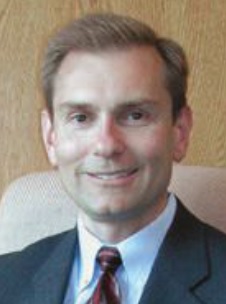Advocacy made simple
Edward P. Salek, CAE, Executive Director | TLT Headquarters Report January 2017
The best way to communicate about a complex field is with examples that relate to everyday life. Send us your thoughts!

Tribology researchers are investigating ways to reduce the friction on hospital-bed linen to aid in the care and comfort of immobilized patients.
© Can Stock Photo / gajdamak
STLE’S 2020 STRATEGIC PLAN SETS FOUR AMBITIOUS GOALS for the organization that all relate in some way to technology and innovation. One of the four addresses the challenge of creating greater visibility and appreciation for an industry and a profession that’s not highly visible or well understood.
This excerpt from the strategic plan segment on Global Advocacy explains the intent: “We must better communicate the value of tribology and lubrication engineering innovations to a global audience outside the field. STLE believes that strong communications and advocacy efforts are necessary to ensure our future relevance as a profession, an industry and a professional society.”
Some progress is evident. As TLT editor Evan Zabawski explained in his December 2016 column, the field of tribology and lubrication was on a bit of a roll last year thanks to a series of events. They included the 50th anniversary of the Jost Report, which effectively defined the field and its impact. As Zabawski said, “I believe we may look back on 2016 as an unofficial Year of Tribology and will remain optimistic that an official International Tribological Year of scientific exchange will occur someday.”
To make that dream a future possibility, STLE continues to work in real time to make the case at a macro level. Most notably, a resolution introduced in the U.S. Congress last year emphasized the impact of tribology on the national economy and competitiveness. It stressed tribology’s role as an enabler of solutions to critical technical problems in manufacturing, energy production and use, transportation vehicles and infrastructure, greenhouse emissions, defense and homeland security, healthcare, mining safety and reliability and space exploration.
It’s also possible to advocate for tribology at a more personal level, with examples that might even surprise a few people in the field. Consider the following.
Tribologists in Europe are trying to develop new fabrics or optimize current fabrics used in hospital-bed sheets by conducting tribological tests over various fabrics in dry and wet conditions. Their main emphasis is on reducing friction and shear forces acting on the skin of immobile patients. In this way tribology can be applied in the medical textile industry in order to provide higher levels of comfort to the patients and disease prevention.
Tribology is used to improve the everyday personal care products we use such as toothpaste, skin creams and hair products. It furthers medical research into preventing tooth decay and damage by investigating the effectiveness of teeth cleaning by balancing the interaction between the bristles of the toothbrush and toothpaste. The goal is to provide maximum cleaning without causing excessive abrasion and harming tooth and gum surfaces.
Passenger cars are very inefficient consumers of energy; only about 20% of the available energy is actually used to move a vehicle. About a third of those energy losses are due to friction in tires and braking. Researchers are exploring novel tire materials and designs as a pathway to greatly reducing these so-called rolling friction energy losses.
Tribology and lubrication engineering is regarded by military leaders as a potent weapon for national defense. Energy-saving initiatives, including the use of alternative sources, have been part of initiatives by the U.S. Navy. “Energy is vulnerability,” a senior official said recently. “Energy can be used as a weapon.”
We are beginning an effort in 2017 to compile these sorts of tribology and lubrication factoids for use on
www.stle.org, in social media and through other communication means. If you’d like to give us a hand, send your thoughts to my email address, which appears below.
As we said, advocacy can be simple!
 You can reach Certified Association Executive Ed Salek at esalek@stle.org
You can reach Certified Association Executive Ed Salek at esalek@stle.org.